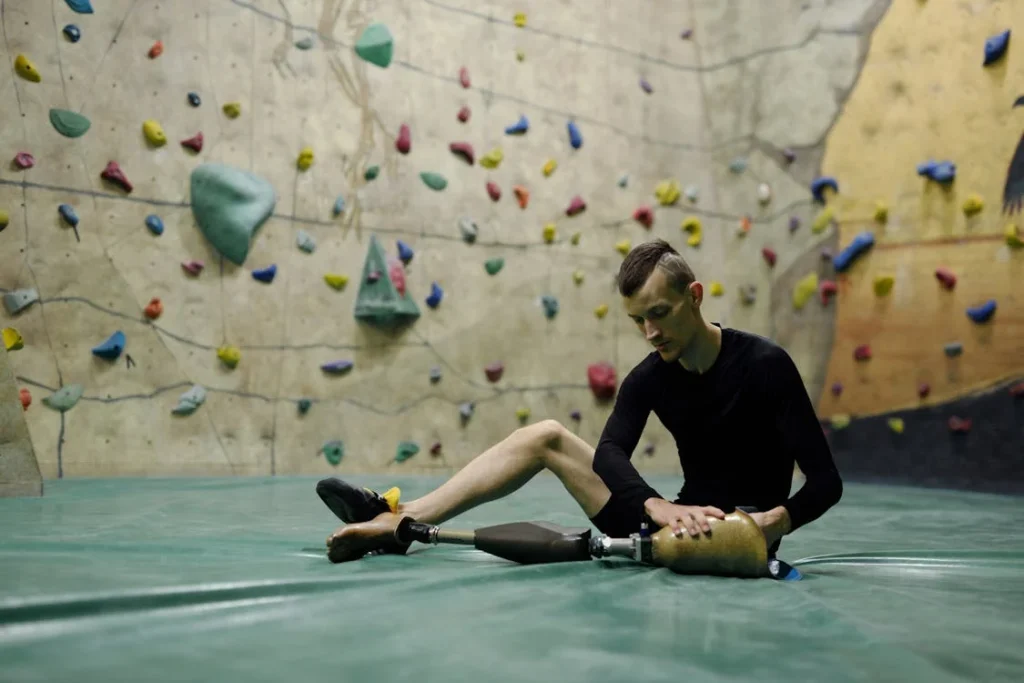Standing, walking, climbing stairs—these everyday actions all begin with one thing: the ability to bear weight. For people using lower limb prosthetics, understanding how weight is supported and distributed through the artificial limb is a key part of walking safely and confidently. It’s not just about balance—it’s about comfort, long-term health, and independence.
At Robobionics, we’ve seen firsthand how proper weight-bearing can transform the way a prosthetic feels and functions. When weight is spread evenly and the prosthetic fits well, walking becomes easier. But when it’s not, discomfort and even injury can follow.
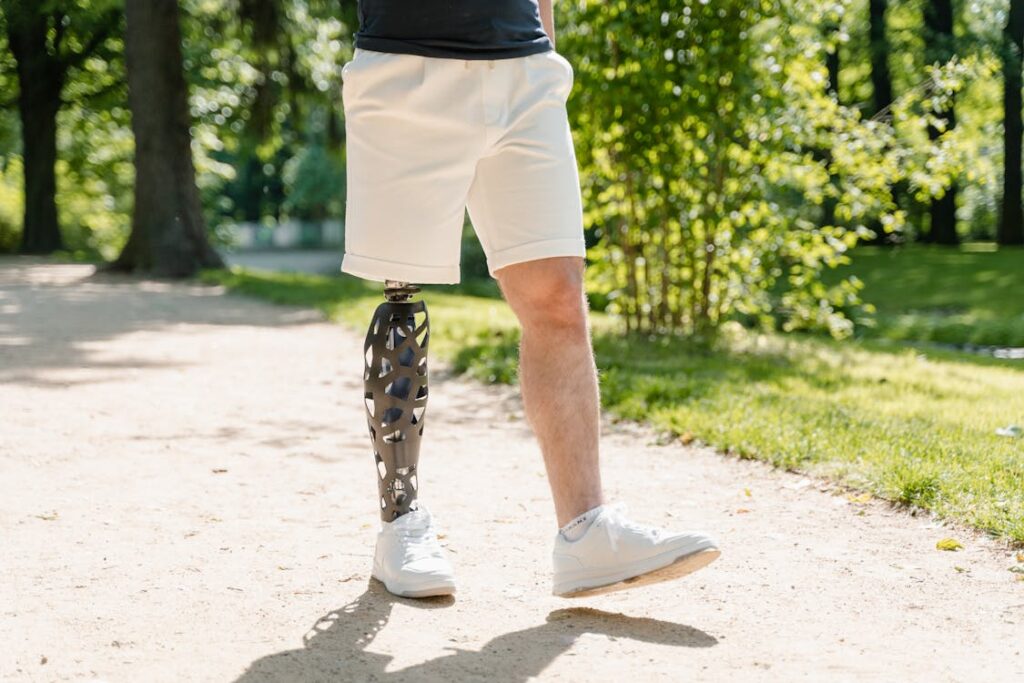
What Is Weight-Bearing and Why Does It Matter?
How the Human Body Naturally Bears Weight
When you stand, your body spreads your weight across your legs and feet. Your bones, joints, muscles, and tendons all work together to carry that load. The hips and knees provide support and movement.
The ankle helps with balance. The foot acts like a shock absorber, taking the force of each step and keeping you stable.
In a healthy limb, this system works smoothly. Your brain sends signals to the muscles, the muscles move your joints, and the bones carry the weight. All of this happens without you even thinking about it.
But when a limb is missing, this balance changes. The body still needs to stand and move, but now the load must be carried differently.
That’s where prosthetics come in—not just as a replacement, but as a new partner in movement.
How Weight-Bearing Changes with a Prosthetic Limb
For someone with a lower limb amputation, the ability to bear weight properly depends on how the prosthetic connects with the body.
Instead of the bones and joints doing most of the work, the prosthetic socket—the part that fits over the remaining limb—takes on that job.
The socket must be carefully shaped to hold weight without causing pain. Too much pressure in one spot can lead to skin damage, swelling, or long-term discomfort.
Not enough support can make the prosthetic feel unstable, like it’s always shifting or slipping.
So, weight-bearing in prosthetics isn’t just about standing up. It’s about how the force is spread across the socket, how the foot hits the ground, and how the leg responds as you move.
It affects your posture, your gait, and even how much energy you use just to walk across a room.
The Role of Socket Design in Weight Distribution
Total Surface Bearing vs. Specific Pressure Areas
Prosthetic socket designs have evolved over the years to improve comfort and performance. In the past, many sockets were built to bear weight on certain “pressure-tolerant” areas of the stump—like the patellar tendon or the back of the thigh—while avoiding more sensitive spots.
Today, many prosthetists use what’s called a total surface bearing approach. This means the weight is spread more evenly across the entire contact surface.
Instead of forcing all the pressure into a few strong areas, this design reduces stress and friction across the limb. It also helps prevent skin breakdown and improves blood flow.
This kind of design is especially helpful for people with sensitive skin, poor circulation, or those who are new to prosthetic use.
A balanced load helps the user feel more in control and less tired after walking or standing for long periods.
Fit Is Everything
No matter how advanced a socket is, it must fit the user perfectly. Even small gaps or tight spots can cause problems. That’s why the fitting process is so detailed.
Prosthetists may use digital scanners, molds, or pressure mapping tools to understand the shape of the limb and how it responds to pressure.
A good fit means more than comfort. It means safety. When the socket is snug but not tight, and when the weight is distributed evenly, the prosthetic becomes an extension of the body.
Walking feels smoother, more balanced, and more natural.
At Robobionics, we take extra care in this step. We know that getting the socket right makes all the difference. We work closely with each user, adjusting the design as needed, and ensuring that the final fit is truly customized.
Weight-Bearing and Different Levels of Amputation
Above-Knee vs. Below-Knee Amputations
The way weight is carried also depends on the level of amputation. A below-knee (transtibial) amputee still has their knee joint, which helps with control and movement.
This makes weight-bearing a bit more straightforward, as the natural joint supports much of the load.
An above-knee (transfemoral) amputee doesn’t have the knee, so the prosthetic must include an artificial joint. This makes weight-bearing more complex.
The socket has to support both the upper leg and the hip movement, and the knee joint must respond to different types of motion, like sitting, standing, and climbing stairs.
In both cases, balance is key. The user must feel stable whether standing still or walking quickly. That means the weight needs to be centered, the foot must land correctly, and the limb must move in a natural rhythm.
Bilateral Limb Loss
When a person has lost both legs, the challenge of weight-bearing increases. There is no “sound side” to lean on.
Every part of the prosthetic system must work together to create balance. The sockets must be nearly perfect. The feet must absorb shock and offer stability. And the user must learn to trust the devices completely.
This is where personalized training and guided rehabilitation play a huge role. A well-fitted prosthetic is only the beginning. Learning how to use it in real-life situations is what helps restore mobility and freedom.
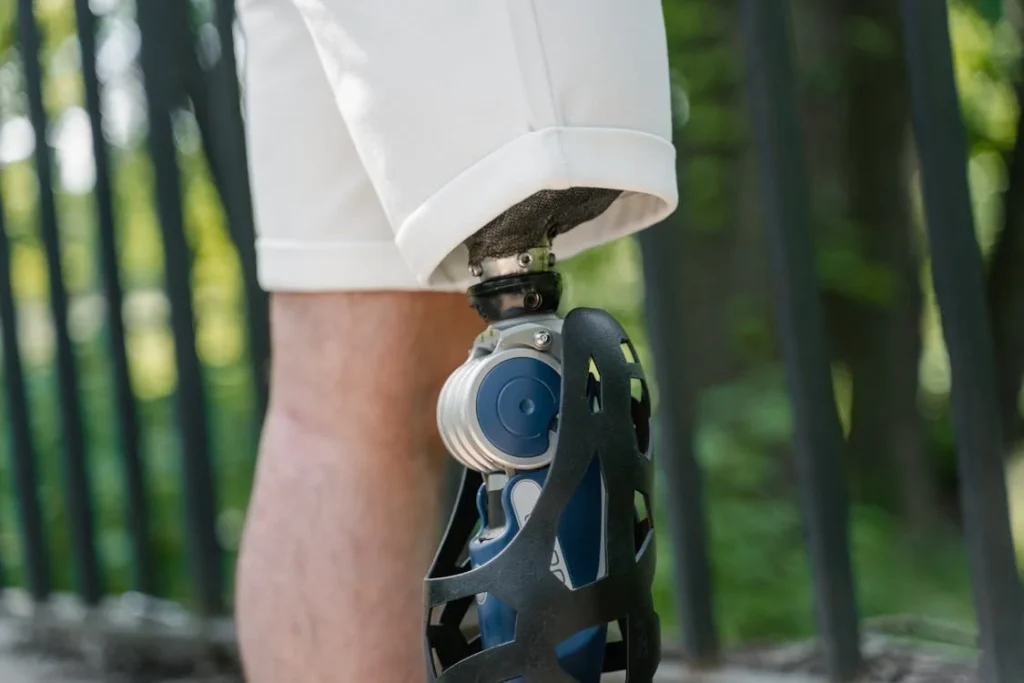
The Role of the Foot and Knee in Managing Weight
How the Prosthetic Foot Affects Load Distribution
The foot may seem like a simple part of a prosthetic leg, but it plays a powerful role in how weight is managed. When you take a step, your heel hits the ground first.
Then, the weight shifts forward to the middle of the foot, and finally to the toes as you push off. This movement is known as the gait cycle, and each phase puts pressure on different parts of the foot.
A good prosthetic foot helps spread that pressure smoothly. It absorbs the shock of each step and supports the user’s weight as they move forward.
Modern feet are designed to mimic the motion and flexibility of natural feet. Some even have carbon fiber springs that return energy with every step, making walking feel lighter and more efficient.
If the foot is too stiff, it won’t absorb shock well, which can lead to pain in the knee or back. If it’s too flexible, it can feel unstable, especially on uneven ground.
The key is choosing a foot that matches the user’s activity level, weight, and lifestyle.
At Robobionics, we work with each user to understand their daily needs—whether they walk short distances, work outdoors, or enjoy active hobbies. The right foot helps them bear weight confidently and walk with ease.
Understanding the Artificial Knee in Above-Knee Prosthetics
When someone uses an above-knee prosthetic, the artificial knee becomes a crucial part of the system. This joint must not only bend and straighten but also handle changes in speed, terrain, and load.
The knee helps manage weight by controlling how the leg swings forward and how it locks when standing still. In early designs, knees were purely mechanical.
They offered basic movement but required the user to move carefully to stay balanced.
Now, advanced prosthetic knees come with hydraulic, pneumatic, or even microprocessor-controlled systems. These technologies adjust the knee’s resistance based on the walking pace and slope of the ground.
The goal is to make the movement smoother and reduce the amount of thought and effort the user needs to put into every step.
For proper weight-bearing, the knee must support body weight at the right moments—especially when standing still or taking the first step.
If the joint feels wobbly or unstable, the user may lean too much to one side, which can lead to discomfort or long-term problems.
Alignment: The Unsung Hero of Stability
Why Proper Alignment Matters
Alignment is one of the most important—and often overlooked—parts of prosthetic setup. It’s about how all the pieces of the prosthetic leg line up with each other and with the rest of the body.
This includes the angle and position of the socket, knee, and foot.
When alignment is correct, the limb moves naturally. Weight flows from the hip down through the leg and into the ground in a straight path. The user feels balanced, steps feel easy, and energy use stays low.
But when alignment is off, problems begin to appear. A foot that’s slightly too far forward or a socket that’s tilted the wrong way can throw off the entire gait.
The user might feel like they’re walking uphill, leaning sideways, or dragging the leg. Over time, this can lead to joint pain, muscle fatigue, or falls.
At Robobionics, we use tools like gait analysis and live feedback to fine-tune alignment. We watch how users move in real-world situations—on ramps, stairs, and uneven ground—and make adjustments until the limb feels right and functions well.
The Impact of Gait Training
Even with the best prosthetic design and alignment, learning how to walk properly with a new limb takes time.
That’s why gait training is so important. It teaches users how to shift their weight safely and use the prosthetic to its full potential.
During training, therapists work on posture, step timing, and balance. They guide the user to move with confidence and teach strategies to manage different surfaces.
Over time, users develop a walking style that feels natural and requires less energy.
Without proper training, many people adopt habits that make walking harder—like leaning to one side, taking short steps, or locking the knee with every move.
These habits put stress on the body and reduce the life of the prosthetic.
That’s why at Robobionics, we include home-based rehabilitation programs as part of our process.
These gamified tools help users practice daily, track their progress, and build strength without needing to visit a clinic every time. When users are empowered to train at home, they improve faster and feel more independent.
Managing Weight on Different Surfaces and Situations
Adapting to Real-Life Movement
In the lab or clinic, walking often happens on flat, clean floors. But life is full of variety—gravel roads, uneven paths, stairs, slopes, and slippery surfaces. Each of these changes how weight is borne through the prosthetic.
For example, walking uphill shifts more weight to the toes. Walking downhill increases the force on the heel. Turning quickly or stepping sideways also changes how the leg must respond.
Advanced prosthetics today are built to handle these challenges. Some foot models have split-toe designs for better balance.
Others use ankle joints that adjust based on tilt. Microprocessor knees can sense the change in slope and react instantly.
Still, the user’s comfort and safety depend on knowing how to move. That’s where proper alignment and gait training come back into play.
By preparing users for real-world conditions, we help them trust their prosthetic—and take on daily life with more freedom.

Skin Health and Pressure Management
The Connection Between Weight and Skin
When weight is transferred through a prosthetic limb, the skin becomes one of the first lines of contact. It must deal with pressure, movement, heat, and sometimes sweat—all at once.
If the socket isn’t fitted correctly or if the skin isn’t cared for, pressure points can lead to pain, sores, or even infections.
Good socket design helps distribute weight evenly, but it can’t do everything. The skin must be protected through daily care, proper hygiene, and monitoring for signs of irritation.
Areas like the knee, shin, and stump edges are especially sensitive. These parts often carry a lot of the pressure during standing or walking.
If a user experiences discomfort, it’s important not to ignore it. Small problems can quickly turn into serious ones if not addressed early.
Even something as simple as a wrinkle in a liner or an area of rubbing can cause a wound. And once the skin breaks down, using the prosthetic becomes painful and harder to manage.
At Robobionics, we always remind users to check their skin daily and report any redness, swelling, or pressure marks. A small adjustment to the fit or alignment can often solve the issue quickly.
Materials That Protect the Skin
Advances in materials have greatly improved comfort for users. Today’s liners are made with medical-grade silicone or gel that cushions the skin and reduces friction.
These materials also wick away moisture, keeping the area dry and cool. This is especially helpful in warmer climates, where sweat can increase the risk of irritation.
Modern prosthetic sockets are also designed with airflow in mind. Some include tiny vents or channels that help the skin breathe. Others are made from lightweight, skin-friendly composites that reduce heat buildup.
We believe that a prosthetic should feel good on the skin. That’s why every Robobionics lower limb solution is created with comfort as a core priority—not just function.
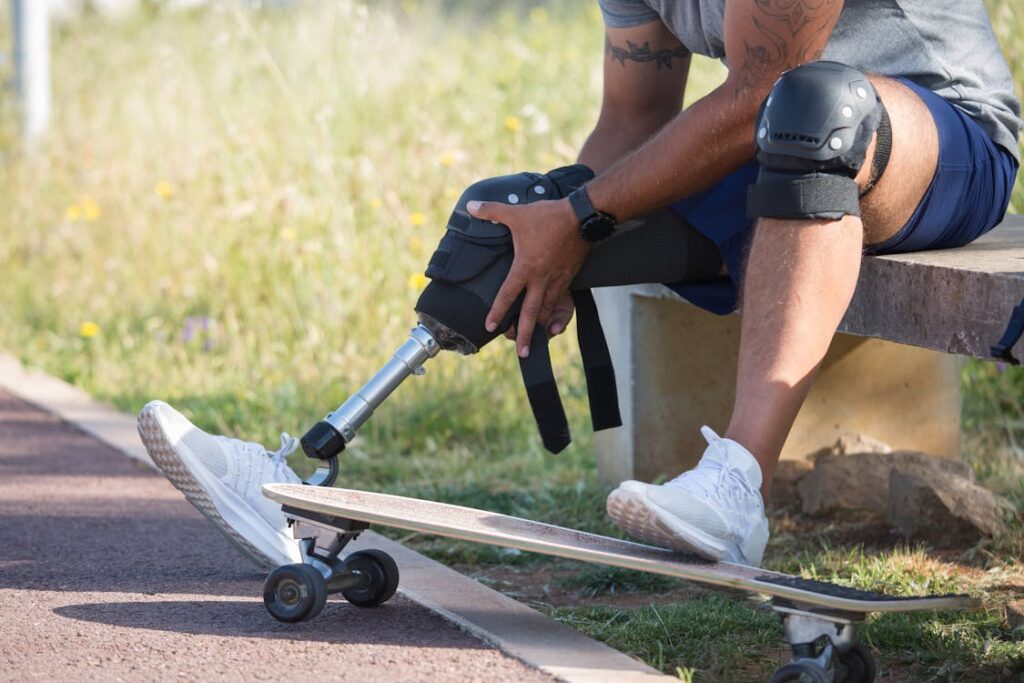
Long-Term Comfort and Wearability
Weight-Bearing Over Time
Using a prosthetic isn’t just about those first few weeks or months. For many, it’s a lifelong journey. That means the limb must support weight comfortably over the long term.
Changes in body shape, muscle tone, or weight can all affect how the prosthetic feels and functions.
A limb that once fit perfectly may start to feel loose or tight. A socket that once distributed weight evenly might begin causing pressure in new areas.
These changes are normal and expected. The important thing is to recognize them early and make timely adjustments.
Regular follow-ups with a prosthetist help keep the fit comfortable. These visits aren’t just for fixing problems—they’re also a chance to make improvements that enhance how the limb feels and performs.
At Robobionics, we offer long-term support and maintenance to every user. Whether it’s checking alignment, modifying sockets, or replacing worn liners, we know that small updates can make a big difference in how the user feels every day.
Dealing with Fatigue and Overuse
Weight-bearing with a prosthetic takes more energy than with a natural limb. Even with the best technology, the body must work harder to stay balanced and move efficiently. This can lead to fatigue, especially in the early stages of use or after a long day.
Some users may also experience overuse injuries in other parts of the body, like the lower back, hips, or opposite leg.
That’s because when one side of the body is missing a natural joint or muscle, the other side often takes on more work.
That’s why proper weight distribution is so important. A balanced gait reduces strain on the rest of the body and helps prevent injuries over time. Good posture, strong core muscles, and regular stretching can also help reduce fatigue.
And when the prosthetic feels right—when it moves smoothly, supports the body well, and fits securely—everything becomes easier. The user feels more capable, and everyday tasks become less tiring.
Confidence in Movement: The Mental Side of Weight-Bearing
Building Trust in the Prosthetic
One of the biggest hurdles in prosthetic use isn’t physical—it’s emotional. Many new users feel nervous about putting their full weight on their artificial limb.
They worry it might slip, twist, or give out. This fear is completely normal, but it can get in the way of progress.
Trust takes time. It starts with a proper fit, continues with guided training, and grows with every successful step.
When a user starts to feel that the limb will do what it’s supposed to do—support them, respond correctly, and stay in place—the fear begins to fade.
We often hear from users that the turning point is when they stop thinking about every step. They start walking naturally again.
They begin to move without hesitation, without shifting all their weight to the other side, and without watching their feet constantly.
This mental shift is a major milestone. It changes the entire experience of using a prosthetic, and it allows people to fully engage with life again—at home, at work, and in public.
Rehabilitation Builds More Than Strength
Rehabilitation isn’t just about exercises and physical recovery. It’s also about rebuilding confidence and a sense of independence.
Learning to trust the prosthetic, to rely on it for support, and to believe in your ability to adapt—all of that is part of healing.
At Robobionics, we integrate physical therapy with emotional support. We use gamified rehab tools not just to build muscle but to make users feel successful and encouraged. Whether it’s tracking steps, improving balance, or hitting daily movement goals, these small wins add up.
They remind users that they’re in control, and that every step forward—literally and mentally—is a step toward a stronger, more independent life.
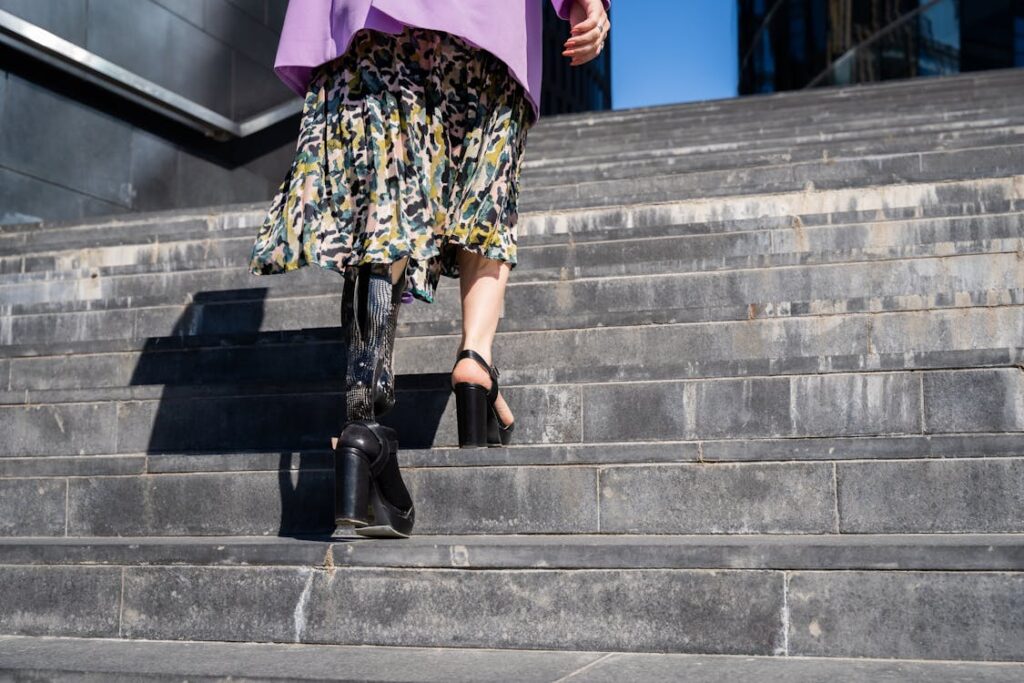
How Lifestyle and Environment Affect Weight-Bearing
Movement in Everyday Life
Weight-bearing doesn’t just happen during therapy sessions or clinic visits. It’s happening every moment you stand, shift your weight, or take a step—even when you don’t think about it.
This is why understanding your daily habits is crucial to building a prosthetic that truly supports your life.
For example, someone who works at a desk most of the day has very different needs from someone who walks long distances or works on uneven terrain.
Even hobbies like gardening, dancing, or playing with grandchildren all affect how weight is applied to the limb—and how the prosthetic must respond.
The surfaces you move on matter too. Smooth tile floors, outdoor gravel paths, sloped sidewalks, stairs—all create different types of pressure on the prosthetic.
A foot that works well on a flat surface may feel unsteady on a sloped hill or bumpy road. That’s why no single design fits all.
At Robobionics, we spend time understanding how each user lives their life. This helps us match them with the right socket shape, the right foot, and the right knee components to support stable, confident movement in real situations—not just clinical ones.
Weight-Bearing and Occupational Needs
For those who have jobs that involve standing, walking, or lifting, weight-bearing capacity becomes even more important. A poorly distributed load can lead to exhaustion or make it hard to perform essential tasks.
The prosthetic must not only hold body weight but also manage shifting loads like lifting tools, climbing ladders, or navigating large spaces.
This means building strength and endurance is just as important as fit. The muscles around the limb, especially the hips, core, and back, need to support the prosthetic as part of a full-body system.
Physical therapy that includes balance training and strengthening can dramatically reduce fatigue and improve performance on the job.
We’ve worked with users in many different professions—from factory workers to teachers—and one thing is always clear: the prosthetic must adapt to the person, not the other way around.
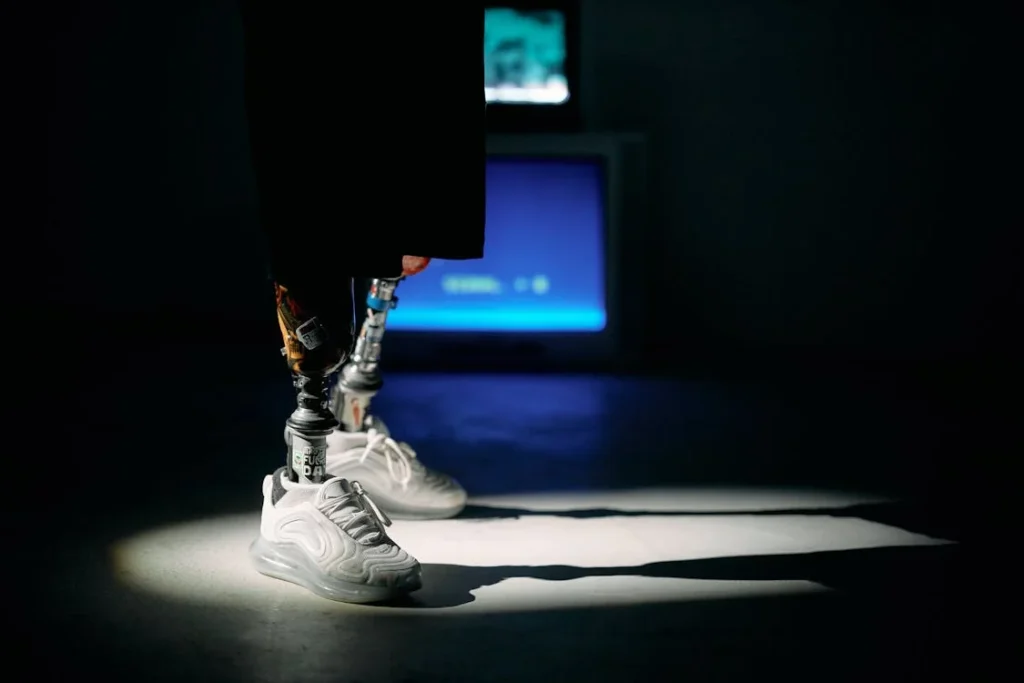
Personalization and Modular Solutions
No Two Bodies Are the Same
Every user’s body is unique. The shape of the residual limb, the condition of the skin, the strength of the muscles, and even past injuries or surgeries affect how weight is carried. This is why personalization is not a luxury—it’s a necessity.
A socket that fits one person perfectly might cause pain or instability for another. That’s why we start with detailed measurements and use technologies like 3D scanning and pressure mapping.
These tools help us understand where the limb can safely bear weight, and where it needs relief.
Even within the same user, needs can change. Weight gain or loss, shifts in muscle mass, or changes in health conditions like diabetes or arthritis all affect how the prosthetic should fit and respond.
Personalization doesn’t end after delivery—it’s a process that continues over time.
At Robobionics, we design modular systems that can evolve with the user. If a foot becomes too stiff or too soft for their daily routine, we can switch it.
If the socket feels too tight during certain seasons, we can adjust it. The goal is to maintain comfort and stability every day, through every stage of life.
The Importance of Follow-Up Care
Even a perfectly made prosthetic will need tweaks and updates. That’s why regular check-ins and follow-up care are essential. Users may not notice small shifts in weight-bearing at first, but over time, those shifts can lead to discomfort or injury.
We recommend periodic reviews to assess fit, alignment, and performance. These sessions also allow users to raise concerns and ask questions—like whether their walking feels different, or if new pressure points have developed.
We also use these check-ins to revisit lifestyle changes. Maybe the user has taken up a new activity, changed jobs, or wants to walk longer distances.
Each of these goals may require new components or fine-tuning. A flexible system and responsive support team make these changes smoother and more successful.
Emotional Impact of Good Weight Distribution
Feeling Stable Creates Freedom
One of the first things new users tell us after getting a properly fitted prosthetic is, “I feel steady again.” That feeling of security is priceless.
When you know your limb will support you—no slipping, shifting, or wobbling—you start to move more freely.
Good weight distribution creates not only physical comfort but emotional confidence. It allows people to stand tall, walk with purpose, and return to daily routines without fear. It restores a sense of normalcy and independence.
People who feel secure in their movement are more likely to stay active, engage socially, and take on new challenges. Whether it’s returning to school, traveling, or even just walking the dog—confidence in weight-bearing unlocks new possibilities.
Small Changes, Big Results
Often, improving a person’s mobility doesn’t mean replacing their entire prosthetic. It might be a small change in the angle of the socket, a lighter foot design, or a different type of liner.
These adjustments can dramatically improve how weight is spread and how the body feels at the end of the day.
This is why open communication between the user and prosthetist matters so much. When users feel heard, and when changes are made quickly and respectfully, their experience improves.
At Robobionics, we treat every adjustment as a step toward better quality of life—not just a technical fix.
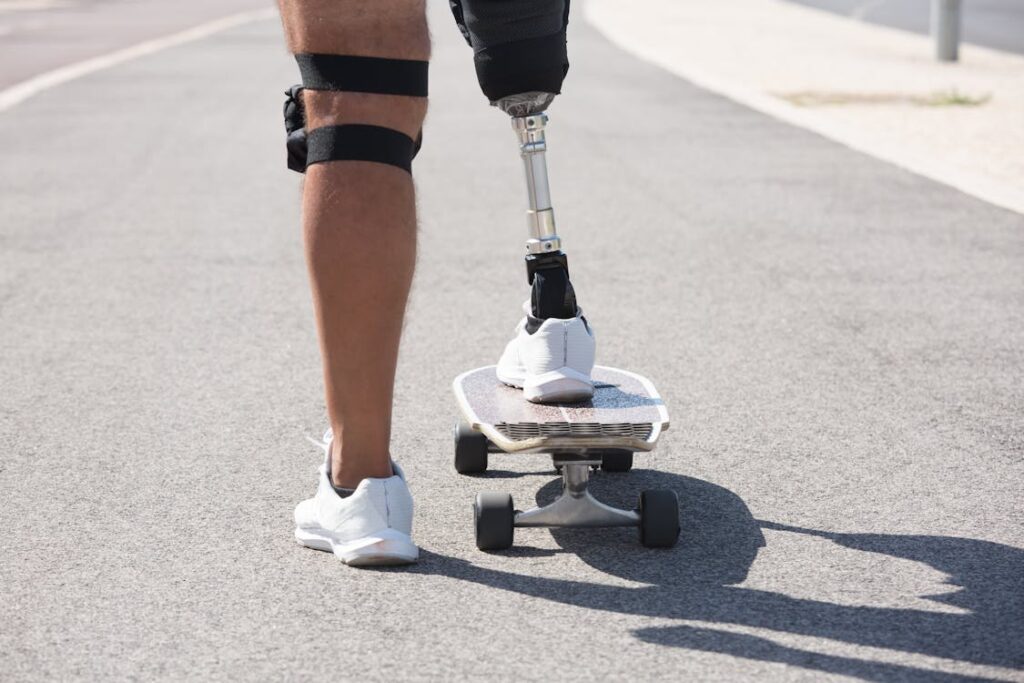
The Future of Weight-Bearing in Prosthetics
Smart Technology Is Changing the Game
The next generation of prosthetics is moving beyond mechanical function and into intelligent systems that think, learn, and adapt.
Smart sensors, embedded in the prosthetic socket and foot, are helping track how weight is distributed throughout the day.
These sensors collect data on pressure, alignment, and gait—helping users and clinicians understand exactly how the limb is performing in real time.
Imagine a prosthetic that alerts you when pressure is building up in one area too much, or when alignment is slightly off.
That kind of real-time insight can prevent skin damage, reduce fatigue, and help the prosthetist make better adjustments, faster.
At Robobionics, we’re already exploring smart integrations that bring artificial intelligence into weight-bearing design. The goal is to create a system that not only supports movement but actively improves it with every step.
These systems can offer more personalized care, especially for users in remote areas, where access to regular follow-ups might be limited.
Responsive Materials and Adaptive Alignment
Another exciting direction is the use of responsive materials—components that shift their stiffness or flexibility based on the task at hand.
For example, a foot might become firmer when walking uphill to support weight better, and more flexible on flat ground to ease the push-off motion. This kind of adaptation mimics the way real muscles and joints work under changing loads.
Similarly, alignment adjustments are moving from manual to automatic. Prosthetics in the near future may include micro-actuators or self-leveling systems that correct alignment dynamically based on walking patterns, surface tilt, and user feedback.
This makes weight-bearing not only easier but safer—especially for older adults or those with other mobility challenges.
Real Stories, Real Impact
Life-Changing Results Through Better Weight-Bearing
We’ve had the honor of working with hundreds of individuals, each with their own goals and stories. One of our users, a schoolteacher from rural Bihar, had struggled with back pain and socket discomfort for years.
The issue wasn’t her prosthetic leg—it was the way weight was distributed through it. After a careful reassessment and socket redesign using a total surface bearing method, her pain eased within days.
She now walks confidently into her classroom, stands for hours, and moves with grace she never thought possible.
Another case involved a young athlete training for competitive para-sports. His daily routine included intense drills, running, and quick shifts in movement.
By using a microprocessor-controlled knee and a responsive carbon foot, we created a prosthetic that adapted instantly to his needs.
The improved weight-bearing system helped him move faster with less fatigue, and his training sessions nearly doubled in duration.
These stories remind us that while biomechanics is a science, prosthetic care is deeply personal. The right support system—designed with intention and empathy—can restore not just mobility, but hope.
Conclusion
Weight-bearing is the foundation of every successful lower limb prosthetic experience. It’s what allows a person to stand tall, walk steadily, and move freely in their daily life. When weight is properly supported—through a well-fitted socket, stable alignment, and the right components—everything becomes easier and more natural.
But good weight-bearing isn’t just about the physical. It brings comfort, reduces fatigue, and builds confidence. It gives users the trust they need to move without fear and reclaim their independence. From the first step to long-term daily use, how weight is carried through a prosthetic impacts the body and mind in powerful ways.
At Robobionics, we believe that everyone deserves a prosthetic that fits well, supports well, and adapts to their life. With smart design, ongoing care, and personal understanding, we can help every user feel more stable, more comfortable, and more empowered.
If you’re looking for support with your lower limb prosthetic journey, we’re here to help you every step of the way.



